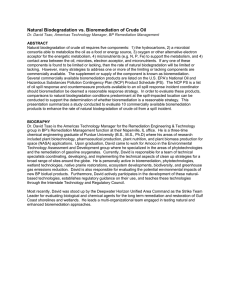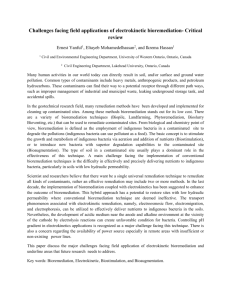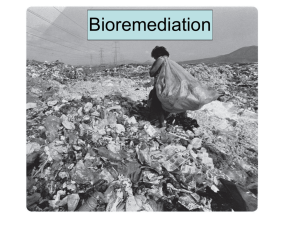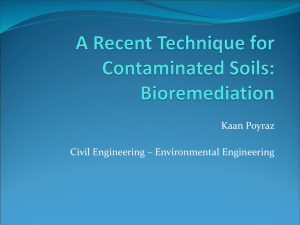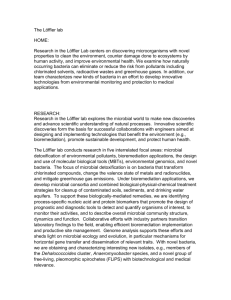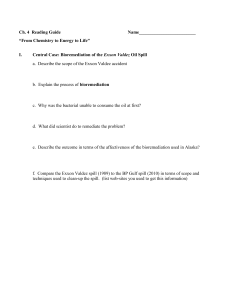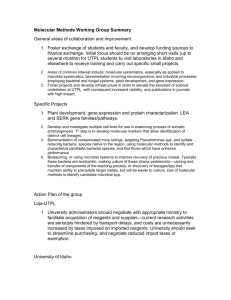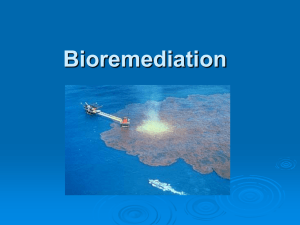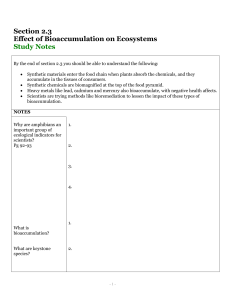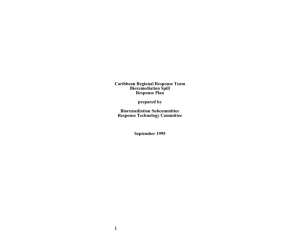Bioremediation - Sintich Science
advertisement
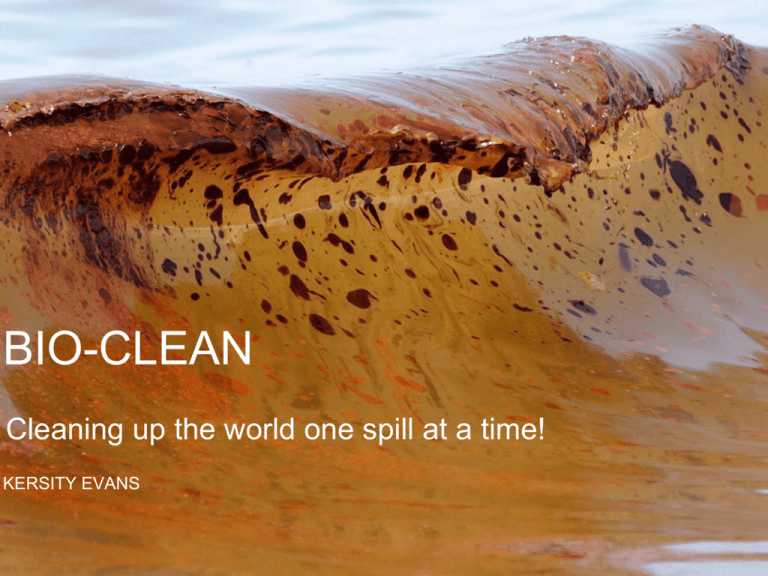
BIO-CLEAN Cleaning up the world one spill at a time! KERSITY EVANS WHAT IS BIOREMEDIATION? BIOREMEDIATION IS... • According to the EPA, bioremediation is "a treatment that uses naturally occurring organisms to break down hazardous substances into less toxic or non-toxic substances". • Bioremediation involves the use of genetically enhancing organisms to destroy toxic waste material and is often used in oil spill clean up. • Bioremediation can be classified in two ways: in situ, treating contaminated material at the site, or ex situ, removal of the contaminated material to be treated elsewhere. • There are many examples of bioremediation related technologies including: phytoremediation, bioventing, bioleaching, landfarming, bioreactor, composting, bioaugmentation, rhizofiltration, and biostimulation. BIOREMEDIATION HISTORY • Bioremediation has been around since about 600 B.C.E. And was believed to be used by the Romans to treat their waste water. • Although it was discovered by Romans, bioremediation has only been studied since the 1940's. • The process of using bioremediation was discovered by George M. Robinson in the 1960's. METHODS OF BIOREMEDIATION Used in railroads and metals • Phytoremediation uses plants to take in toxic substances. • Mycoremediation- mushroom mycelium (the main body of the mushroom) releases enzymes that can break the chemical bonds of many petrochemicals and toxins. • Bacterial- gluttonous microbes break down organic contaminant. They break carbon chains until the contaminant is eliminated. As a result, carbon dioxide and water are left behind as byproducts with trace elements of fatty acids. Used in toxic waste, TNT, and soil and water CURRENT USES • The BP Oil Spill- microorganisms decomposed the pollutant. • Slaughterhouses- used to clean waste water. • McDonalds- used to destroy fat, oil, and grease. • Ben and Jerry's- used to destroy extremely strong waste PROS CONS Relatively inexpensive Hard to control No buildings need to be dug up and removed Concern about the spread of germs Works over large areas Concern about disease from toxic bacteria Works quickly above ground and Concern about use of unnatural slowly below ground bacteria (has been genetically engineered) Effective in oil spill clean up Bacteria will clean until all toxic waste is removed BIOETHICAL CONCERNS • The bacteria are naturally occurring and could upset natural environment. • Nutrients added could stimulate microbe species other than those ment for bioremediation. CASE STUDY • The first commercial use of bioremediation was in 1972 to clean a Sun Oil pipeline spill in Ambler, Pennsylvania. An estimated 3,186 barrels of high octane gasoline was spilled into an aquifer due to a pipeline break. The gasoline was contained by pumping nearby wells. • Exxon Valdez oil spill in 1989. A pipe exploded and poured into the Yellowstone River in Montana. SOURCES • http://andrewtle2011.wix.com/bioremediation#!contami nated-sites/c2120 • http://matts-bioremediation.tripod.com/id3.html • http://science.halleyhosting.com/sci/eco/fairviewstory/bi oremediation.htm
